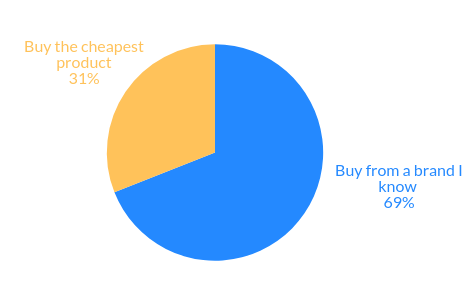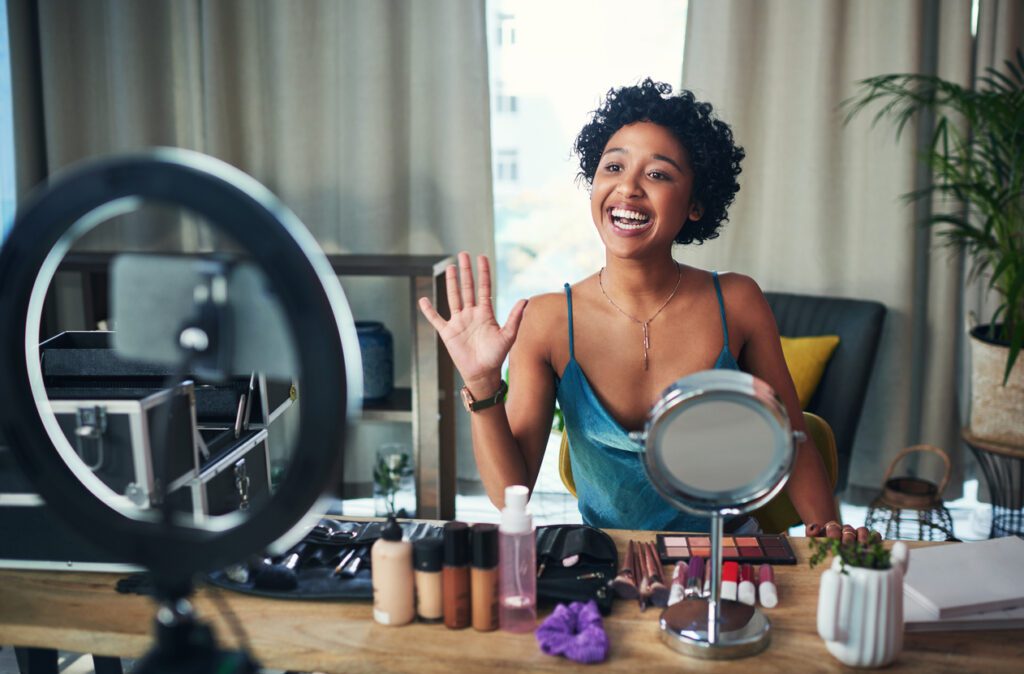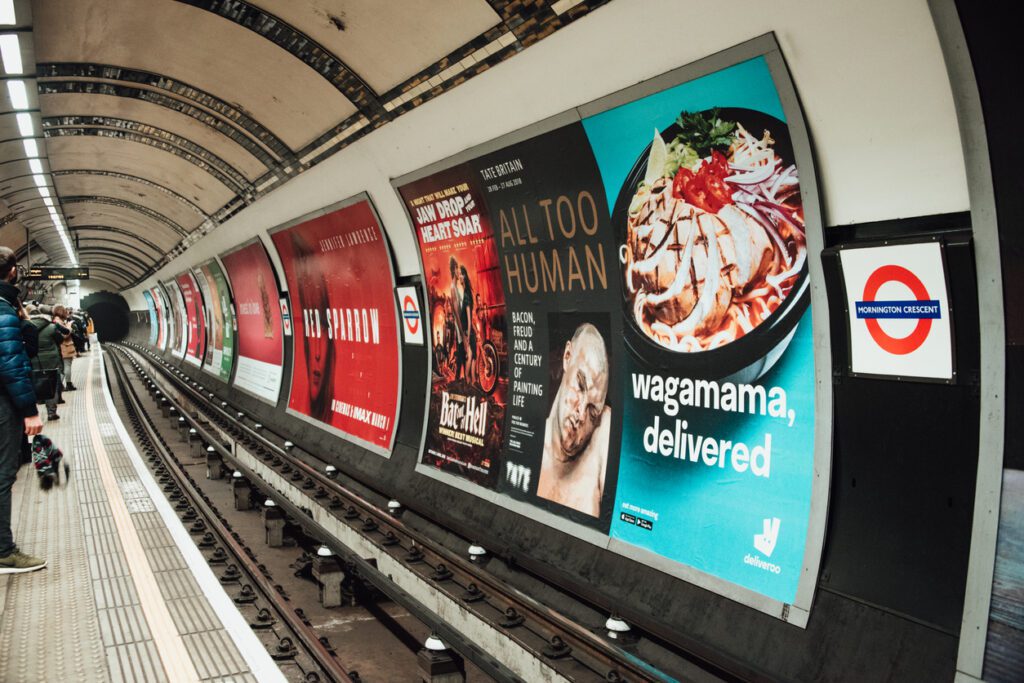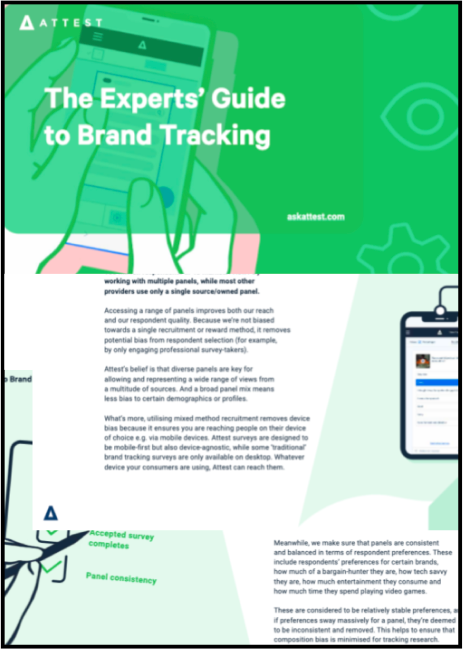16 Ways to build a brand awareness campaign that turns heads in 2025

Is your brand getting lost in the noise? Here’s how to make it stand out.
- What is brand awareness?
- Why brand awareness is important
- How to get started with your brand awareness strategy
- How to create more brand awareness
- 16 Strategies for your next brand awareness campaign
- How to measure the success of your brand awareness campaign
- Frequently asked questions about brand awareness
It’s always been important for people to be familiar with your brand but today it’s even more crucial.
That’s because we’re increasingly shopping online rather than in-store. Whether you’re a new startup or an established business, brand recall and awareness will be a factor that’s central to your success.
If your brand name is not well-known – i.e. if your brand recall or awareness is low – there will be fewer people searching for you and you’ll make fewer sales.
Compounding the problem is the fact that brands have never faced so much competition.
So what can marketers do? In this guide we’ll look at how to measure brand awareness that your brand has, 16 ways to build it, and how to keep growing your brand year after year with brand awareness surveys.
Here’s a TL;DR of the 16 methods, grouped by marketing category:
Organic strategies (free or low-cost, long-term impact):
- Develop a strong tone of voice
- Double down on SEO and content marketing
- Be engaged on social media
- Tap into the latest social media channels
- Share your wisdom with branded infographics
- Turn employees into brand ambassadors
- Make guest appearances
Paid strategies (requires budget, scalable results):
- Make the most out of influencer marketing
- Run paid ad campaigns
- Retargeting
Experiential strategies (interactive, community-driven, memorable):
- Start with referral programs
- Use your branding everywhere
- Start partnerships with relevant businesses
- Organize contests and giveaways
- Get featured in industry publications
- Don’t forget offline marketing is still a thing
What is brand awareness?
Before we get started, let’s look at our intro guide to brand tracking. And on the Consumer Research Academy we have this how-to guide on running your own brand tracking.
To give a simple definition, brand awareness means the familiarity consumers have with a particular product or service. You might sometimes hear ‘brand recall’ used – it basically means the same as brand awareness.
When marketers talk about brand awareness, they’re usually referring to brand awareness within a target market or target audience.
Likewise, a brand awareness campaign is a marketing campaign designed to familiarise consumers with a new product or service, or an existing one that is not well-known (for example, when a brand launches in a new country).
A brand awareness campaign will usually be multi-pronged, involving marketing efforts across multiple channels, as opposed to just one advert in a magazine or on the TV.

As well as introducing the product or service, a brand awareness campaign aims to communicate the values that differentiate it from the competition—what sets your brand identity apart from them.
It differs from a traditional marketing campaign in that its success won’t be judged on a sales uplift (although that might factor into it).
The main aim is to increase knowledge about the brand and its products within the target audience — and there are various ways to measure its performance, which we’ll look at shortly.
There are different levels of brand awareness:
- Awareness (recall) of your brand name
- Awareness of your product offering
- Awareness of your brand attributes (i.e. what distinguishes you from competitors)
When assessing how much awareness your brand has, it’s important to measure all three of the above metrics, perhaps with a brand perception survey or brand management software.
While it’s helpful if lots of consumers have heard of your brand name, if they don’t know what you actually do or why they should purchase from you, your brand awareness won’t necessarily translate into increased sales.
The activities you choose to comprise your brand awareness campaign should be as strategic as possible, meaning that they get you maximum exposure among your target audience with the minimum outlay.
Large marketing budgets and extensive staffing resources clearly offer an advantage when it comes to brand building but that’s not to say small businesses or bootstrapping brands can’t make great strides.
With hard graft, many of the above activities can be carried out at relatively little cost.
Examples of brand awareness tracking
Here are some examples of brands that have seen great results and ROI from their brand tracking:
- Oddbox – they saved £200k on national expansion and gained 101k Instagram followers after getting a better understanding of their regional brand awareness and reputation.
- Trustpilot – they showed real impact on their brand perception following insights they uncovered through brand tracking.
- MOMA – they measured the impact of a key new campaign through their brand tracking.
- The Vegan Society – saw a 19% uptick in registrations following outputs of the research
Why brand awareness is important
As we discussed earlier, brand awareness is key for driving online searches of your brand name. It also plays a big role in the purchase decisions consumers make in a wider marketplace, when confronted with multiple choices.

When asked whether they would prefer to buy the cheapest product or one from a brand they know, 69% of consumers would choose the brand they’re familiar with. This pulling power is known in the marketing industry as ‘brand equity‘.
Brand equity describes the value of having a well-known brand name — and it’s what arises from having good brand awareness.
The CEOs of household name brands understand how important it is to have brand equity because it has a direct impact on the bottom line. Ultimately, the ROI of brand awareness includes:
- Increased sales – Consumers are more likely to buy brands they’ve heard of. An established brand is also at an advantage when it comes to distribution — you’re more likely to get stocked if your brand is in demand, leading to even higher sales.
- Higher profits — Consumers are willing to pay more for branded products. Research shows that brand plays an important role in pricing, with companies able to charge a premium for products even when physical superiority over competitors can’t be demonstrated.
- More influence — A well-known brand will find it easier to make strategic partnerships, as companies are naturally keener to team up with influential allies. What’s more, recognisable brands find it easier to recruit talent.
How to track your brand ROI: 10 tactics
Measure your brand awareness to prove ROI on your brand work. Here are the 10 steps our research experts use to grow brands based on real consumer insights.
Learn moreHow to get started with your brand awareness strategy
To get started building brand awareness it’s important to know how much you currently have – and to ask the right brand image and positioning questions of your audience.
If you’re a new brand or if you’re launching in a new market, then you’ll be starting from scratch.
But if your business has been around a little while (or even a long while) you will already have a level of brand awareness – this is where influencing your brand reputation becomes super important.
There are a number of things you can look at to get an indication of how high your current brand awareness is. These include:
- Your mailing list — how many people have signed up to receive communications from you.
- Your social media — how many people follow you on social networks like Facebook and Instagram.
- Your website hits — how many unique visitors you get to your site each month.
- Your search data — how many people search for your brand name in Google and other search engines.
- Social listening — how many people are talking about your brand online.
You may also wish to make the process of measuring brand awareness more simple by using a brand intelligence software.
How to create more brand awareness
If you want to get known, it’s important to put yourself out there.
But it’s not just about slapping your logo all over the place — it’s also about educating the market about what you stand for and building a positive image powered by strong brand insights.
There are three core pillars to building great brand awareness:
- Marketing: leveraging paid and non-paid marketing opportunities to expose your brand to your target audience.
- Messaging: developing a strong value proposition to communicate to your target audience.
- Nurturing: delivering on your brand promise and incentivising customers to promote your brand to their network through word-of-mouth marketing.
If you don’t have all three of these pillars in place, your efforts are likely to fall flat.
After all, if you don’t tell people why they should buy your brand or you give them poor service when they do, you won’t be able to benefit from long-term organic growth in brand awareness.
Once you have defined your brand messaging strategy — and you know which people you want to go after, in which market — you can start planning a brand awareness campaign.
How to position your brand
Learn exactly what your target audience wants to see from your brand with Attest.
Start tracking your brand16 Strategies for your next brand awareness campaign
Are you looking for practical ideas to get your brand awareness campaigns going? We’ve got you covered — feel free to get started with any of the sixteen ideas on this list.
1. Develop a clear tone of voice
Brand development requires consistency to build reputation and awareness. Not just in colour and logo use, but also in the way you communicate, and the words you use.
You want people to instantly recognize you, even if a small part of your branding isn’t immediately showing. A strong tone of voice that matches your target group and a tag line or slogan will help you stand out from all the noise.
2. Start with referral programs
Almost half (49%) of U.S. consumers say friends and family are their top sources of brand awareness. And the effectiveness of referral programs has been proven time and time again.
PayPal and Dropbox didn’t become industry giants by accident: they knew that the secret to building more brand awareness was hiding in their existing customer base all along.
Take Dropbox, who introduced a refer-a-friend feature in 2008. They grew their customer base with 3,900%. That’s not a typo! This immense growth didn’t just come from the referral program — they improved their product and delivered outstanding customer service in the meantime — but it certainly did help.
PayPal did the same thing, (back in the day, so hold your horses!). Except instead of storage space in the cloud, they gave their users actual money.
But referral programs to boost brand awareness aren’t just for the big boys. Many products and services can be promoted with the same technique, and it’s a great way to raise brand awareness in a relatively cheap manner.
3. Make the most out of influencer marketing
People love getting recommendations from other people, especially if those people are experts in their fields.
In come influencers: they are one of the easiest ways to promote your brand to a relevant audience, for relatively low costs — depending on the reach of the influencer.
That doesn’t mean that micro-influencers can’t be just as effective to you. It all comes down to the margin you have on your product and how strongly influencers affect their audiences buying decisions.
To give you an idea: a study found that 61% of consumers in the age group 18 to 34 have at some point been convinced to buy something by an influencer.
If you’re looking for a way to offer these influencers something in return, you could consider starting an affiliate program. This will also help you measure the effectiveness of influencer marketing for your business.

4. Double down on SEO and content marketing
Let’s say you’re in the bubble bath business. You sell them, and other relevant items.
Now, you might set up your SEO around keywords as ‘buy bubble bath’, but raising awareness around your brand goes beyond raising awareness for just your products.
People who are interested in products like yours, have more questions than ‘where to buy a bubble bath’. Write content for all their other questions too and over time you’ll start popping up in those first search results.
Want to know what keywords the competition is ranking on and how to adjust your content accordingly? Check out our article on competition tracking tools for our top tips.
5. Use your branding everywhere
In the unlikely case that you haven’t ordered at Amazon ever, we’re sure you’d still be able to tell what their packaging looks like.
If you ship physical products, don’t miss out on the opportunity of creating branded packaging. It’s that little extra touch that could make a big difference.
This also works for businesses who operate exclusively online. Make sure you use your branding at every possible touch point along the customer journey, all the way down to your email signatures and Thank You pages.
Build an instantly recognizable brand
Track and improve your brand awareness and perception for target customers using insights from the top brand management software.
Track your brand6. Start partnerships with relevant businesses
Whether you’re a local business or operate solely online, partnerships are a great way to tap into new audiences and grow your brand awareness.
Many businesses have a great deal of overlap in their ideal customers, or are somehow connected. Try to partner up and add value to your customers together.
7. Be engaged on social media
Simply having a social presence and even consistently posting will not substantially grow your brand awareness.
But social media does play an important role in growing brand awareness, as long as you’re using it as it was intended: in a social way. Leave your own pages every once in a while and start interacting with the content your followers or partners are posting.
This is a sneaky way of making sure your name pops up on the timeline of people who might be interested in your brand. Extra points if those appearances are loaded with valuable information.
8. Tap into the latest social media channels
Do you feel like your social media following has plateaued, but you still have a lot of great content to put out? Try some new social media channels that your brand isn’t represented on yet — like Clubhouse or Pinterest.
You could be speaking to countless new people who’ve lost interest in Instagram and Facebook ages ago, but are still interested in brands like yours.
9. Share your wisdom with branded infographics
A great way of raising brand awareness is by being present and engaging in online groups or people who are interested in your market.
You can add value by providing free content as a business expert, but a face in a webinar with a small logo won’t do much for your brand awareness.
Instead, or rather additionally, try to create infographics on the subjects you educate people about. Add recognizable branding to this and make them shareable, so people start seeing your name and branding in all the right places, directly linking them to your expertise.
10. Turn employees into brand ambassadors
Let’s be real here, we’d rather follow real people on platforms such as LinkedIn and Instagram, than the businesses they work for.
We’re all looking for content we connect with on a human level. Seeing something that comes from a company page immediately feels like it’s trying to sell you something. People are less likely to engage with it or share it.
Content from real people, however, that’s where it gets interesting. Knowing this, it can pay off to train your employees to use platforms as LinkedIn. Every time they comment or share something valuable with a profile that has your branding weaved into it, you grow your brand awareness a little bit.
11. Make guest appearances
Another smart way of making use of someone else’s audience, is by making an appearance in their content, whether that’s in webinars, podcasts, Instagram Q&As or blogs.
By choosing the right partners you’re sure that your audience will be interested in what you have to add to the conversation, and it’s a great way to increase awareness amongst new people.

12. Paid ads
Whether it’s social media platforms or search engines: it’s becoming increasingly easy to target exactly the right people with paid ads.
In the case of raising brand awareness, you can specifically aim at people who are interested in products like yours or the market you’re in, but who haven’t interacted with your brand. Tapping into this group with clear and creative messages could be an amazing way to boost your brand awareness.
13. Organize contests and giveaways
People get enough content to consume pushed at them on a daily basis. If you want their attention, ask them to create something, to interact with content, instead of just sitting there.
With a little incentive, you could create a giveaway or competition that gains traction through shares, all while increasing brand awareness in a fun way.
14. Get featured in industry publications
Now, this won’t happen overnight. It’s part of establishing yourself as an authority in your market.
If you want to be considered for any industry publications, make sure you’re putting out a steady stream of valuable content in your blog and social media channels.
If you can demonstrate you have something to share that their readers would love, you’ll have a foot in the door with possibly thousands of readers who are undoubtedly interested in getting to know you.
15. Retargeting
How many brands have you interacted with today? Chances are it’s too many to count. And that’s why some slip our minds, even though it would’ve been a great match — now, or further down the line.
People who have visited your page and suddenly left don’t have to be considered gone: with the right techniques in place, you can set up smart retargeting campaigns to remind them of your business when the time is right.
16. Don’t forget offline marketing is still a thing
While we spend most of our time looking at screens, we don’t necessarily pay attention to the brands we scroll past. That’s why some brands are thinking ‘’inside the box’’ again, and go back to investing more in offline marketing.
A poster or billboard in relevant places could be a refreshing way to get your name out there.
Big fan of measuring the effectiveness of your brand awareness campaigns? Include things like a QR code on your offline marketing material and create dedicated landing pages to see how much it pays off.

How to measure the success of your brand awareness campaign
Now you know how to raise brand awareness, you’ll want to measure how effective your new strategies are. The easiest way to do this is using a self-service consumer survey platform. To get up and running quickly, check out our brand tracking survey template or try a brand tracking tool.
With just a few questions, you’ll be able to obtain vital brand awareness metrics including:
- Unprompted brand awareness — the number of people who name your brand when asked to think about your product or service category.
- Prompted brand awareness — the number of people who say they’ve heard of your brand when presented a list.
- Level of brand awareness — the number of people who can correctly identify your product offering or key brand attributes.
Thanks to simple demographic filters, you’ll be able to ask questions directly to your target audience. This is important because you might only be interested in a select group of consumers, for example, parents to young children or dog owners.
By taking baseline measurements (perhaps using a brand awareness template), you’ll be able to accurately measure your brand awareness growth. You’ll also be able to set targets for that growth, for example, increasing prompted brand awareness among your target audience from 20% to 40%. But how do you go about increasing specific brand awareness activities?
Measuring the success of your brand awareness campaign is easy if you’ve run initial research and obtained baseline figures to benchmark against. All you need to do is re-run your original brand perception survey and see what’s changed.
When brands continue to do this at regular intervals, it’s called brand tracking. It allows them to keep tabs on their brand awareness growth, and can also be used to track their performance against competitors. To learn more about brand tracking, download our free guide.
And here’s everything you need to know before you set up your brand tracker.
You can combine the data you get from brand tracking with sales data, advertising reach data, web traffic data and social media data, to get a complete picture of how your brand awareness campaign has performed.
You’ll also want to look at how each marketing activity you carried out as part of the campaign contributed to the overall figures. For example, you can look at where web traffic came from, which ads or ad placements drove the most clicks, or what channel partner brought in the most new customers.
It’s important to take learnings so that you can apply them the next time you run a brand awareness campaign. By optimising each time, and repeating only the most effective activities, you’ll be able to spend your budget more strategically and get maximum ROI. Download our free guide to learn more about running effective campaigns.
How to keep creating brand awareness
The key to building brand recognition and awareness is consistency – don’t take your foot off the pedal. This means making a commitment to things like your social media channels and blog. There’s little point having a flurry of activity and then letting it all drop off; all your good work will be undone.
A strong brand is not something that can be built overnight. And the results of your brand building efforts can take time to show in your bottomline, after all not everyone you make aware of your brand will be immediately ready to convert.
Think, for example, about an estate agency brand – while a potential customer might not be looking to buy a property right now, they could be a year down the line. That’s when your previous brand awareness efforts will kick in and (hopefully) it will be your brand that’s top-of-mind.
Frequently asked questions about brand awareness
1. What are the most important brand awareness metrics?
It’s a matter of combining the right metrics to create an image that gives you not just numbers, but also context. Looking for more inspiration to measure brand awareness? Check out these 11 key brand awareness metrics. Here are some of the most important ones to measure:
- Branded search volume
- Brand name mentions
- Share of voice and share of impressions
2. How can I measure brand awareness?
Here are our top five ways to measure brand awareness:
1. Check your social media following
2. Track your website traffic
3. Use Google Trends data
4. Survey your target audience
5. Use brand tracking software
3. Does increasing brand awareness actually pay off?
Yes, it does! Brand awareness has a very real ROI, and it’s easier to measure than you’d think. Simply put: nobody buys from a brand if they don’t know it exists. Pre-and post-campaign brand awareness numbers combined with sales numbers give you a better picture of the actual ROI of brand awareness.
4. What’s the difference between brand awareness and brand recognition?
Brand awareness is often confused with brand recognition. While the two are closely related, they don’t mean exactly the same thing. Brand recognition is the extent to which consumers can identify your brand from the visual elements of its brand identity — your logo, for example. Brand awareness goes a step further to the point that the public can recall information, emotions or general impressions about your brand.
Prove the ROI of your brand work
As marketers, we’re often left in the dark about what’s working and what’s not when it comes to brand marketing. Attest can throw light on this unknown with consumer insight.
How to track your brandTell us what you think of this article by leaving a comment on LinkedIn.
Or share it on:

